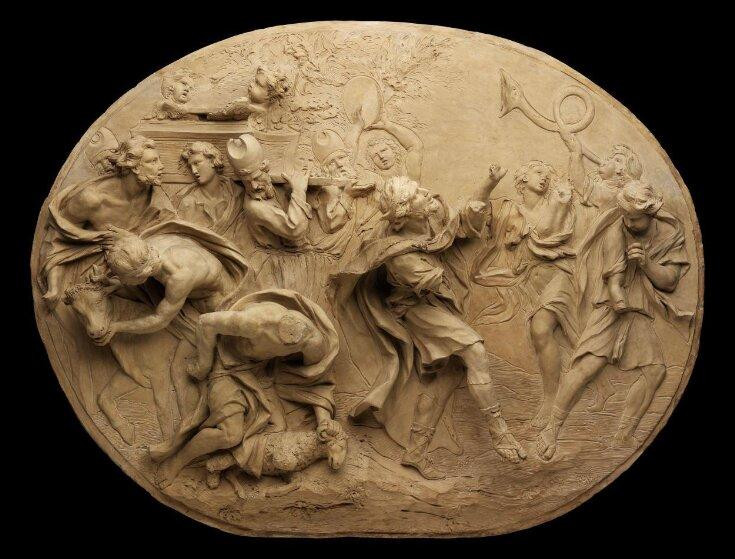Christian culture is rich with traditional sayings, many drawing inspiration from Psalms, liturgies, and well-known Biblical stories. Cultural norms also play a significant role in shaping these expressions. One such saying, particularly within certain Christian circles, is, “He danced without leaving room for Jesus,” or “She is dancing without leaving room for Jesus.” Interestingly, this phrase isn’t directly found in the Bible. So, where does this popular saying, “Dancing Without Leaving Room For Jesus Meaning,” originate, and what does it truly imply?
Unpacking the Meaning of “Danced Without Leaving Room for Jesus”
When someone remarks, “They danced without leaving room for Jesus,” they’re suggesting that a couple was dancing in a manner that was physically too close, leaving minimal space between their bodies. The underlying expectation within this saying is that Christian men and women should maintain enough physical distance while dancing to hypothetically accommodate another person between them – and that person is metaphorically Jesus. The idea is that the presence of Jesus, even in imagination, would deter any inappropriate behavior between a couple.
The “Leave Room for Jesus” Concept and the Value of Purity
The phrase “leave room for Jesus” is deeply connected to the Christian value of physical purity. Purity, in a Christian context, encompasses various aspects, but the Bible often emphasizes sexual purity as a way to honor God with our bodies. The Apostle Paul, in 1 Corinthians 6:18-20, powerfully addresses this: “Flee from sexual immorality. Every other sin a person commits is outside the body, but the sexually immoral person sins against his own body. Or do you not know that your body is a temple of the Holy Spirit within you, whom you have from God? You are not your own, for you were bought with a price. So glorify God in your body.”
However, the definition of “sexual immorality” can be interpreted differently. Biblical teachings generally present sex as intended for marriage, often leading to the view that premarital sex is sinful. Therefore, excessive physical closeness, even in dancing, could be seen as a step towards inappropriate touching and potentially sexual immorality. This is why the “leave room for Jesus” principle extends beyond just dance partners. Variations of the phrase are commonly heard in various contexts:
- Leave room for Jesus.
- Save room for Jesus.
- Make room for Jesus.
Regardless of the setting, the underlying message remains consistent. Whether a couple is sitting together on a couch, sharing a booth at a restaurant, or spending time alone at home, the admonition to “leave room for Jesus” still applies.
The intention behind “leaving room for Jesus” is to proactively avoid temptation. The logic is that if a physical gap exists between a couple – enough space for another person, metaphorically Jesus – the likelihood of premature intimacy is reduced. Adding the notion of a divine chaperone, Jesus, who empowers believers to live a holy life, might encourage couples to consider their actions before escalating physical intimacy.
It’s important to acknowledge that not every interaction between a couple will inherently lead to sin, and not all forms of affectionate touch are inherently wrong. However, dancing, especially close dancing, is often perceived as a potentially risky activity for Christians committed to maintaining purity.
 People enjoying social dancing at a lively event
People enjoying social dancing at a lively event
Tracing the Origins of “Dancing Without Leaving Room for Jesus”
Dance, as an art form, can be highly sensual. In the animal kingdom, dance frequently serves as a courtship ritual. Successful displays of dance can lead to mating. Human dance, too, can be a tool for attraction, although it also exists as a harmless form of social interaction and artistic expression. These dual aspects of dance create a sense of ambiguity, leading many Christians to approach it with caution. Consequently, the phrase “leave room for Jesus” likely emerged from a desire to establish clear and healthy boundaries for believers concerning physical intimacy, particularly in social settings like dancing.
The precise historical origins of “danced without leaving room for Jesus” are not well-documented. Given that many religions emphasize standards of purity, it’s not surprising that similar expressions might develop to communicate expectations around purity and appropriate conduct.
It’s plausible that the phrase gained traction during one of the sexual revolutions of the 20th century. The 1920s, 1960s, and 1990s saw periods of increasing acceptance of promiscuity in broader society. In response, conservative Christian communities often sought to protect their youth from what they perceived as the moral decline associated with dance halls and changing societal views on human sexuality.
These cultural shifts contributed to the rise of various purity movements and programs, such as purity pledges, purity rings, and purity balls, particularly in the 1990s. Coining the phrase “leave room for Jesus” was likely one of the linguistic strategies that developed within these eras to reinforce purity standards in a memorable and easily relatable way.
Modern Interpretations of “Leave Room for Jesus”
Today, while you might still hear “They danced without leaving room for Jesus” or “Save room for Jesus,” its use has often shifted from a serious admonition to a more lighthearted or even satirical expression. It’s frequently employed as a joke or a humorous observation.
The phrase has permeated modern culture, appearing in diverse contexts. Examples include a mention in an episode of the popular ABC show, Black-ish, and its adaptation into a widely circulated online meme. The movie Footloose, while not using the exact phrase, explores a similar theme, centering its plot on a conservative community that views dancing as a threat to the virtue of young people.
More recently, churches have creatively repurposed “leave room for Jesus” to promote social distancing. During the COVID-19 pandemic, some congregations playfully used posters with the phrase to encourage attendees to maintain physical distance to slow the spread of the virus.
Furthermore, the variation “make space for Jesus” is evolving to encourage individuals to create room for Jesus’s influence in their increasingly busy lives. In an era of constant distractions and packed schedules, reminding believers to actively “make space for Jesus” in their daily routines serves as a relevant and important spiritual reminder.
Dancing in the Bible: Examples and Perspectives
Dancing is a recurring activity throughout the Bible and held a significant place in Hebrew culture. It was a form of worship and praise to God, and it was also used to celebrate festivals and victories.
Biblical Figures Who Danced for God
Miriam, Moses’s sister and a prophetess, led women in dance and song to praise God after the parting of the Red Sea: “Then Miriam the prophetess, Aaron’s sister, took a tambourine in her hand, and all the women followed her, with tambourines and dancing.” (Exodus 15:20)
Women danced and sang to celebrate David’s victory over Goliath: “As they were coming home, when David returned from striking down the Philistine, the women came out of all the cities of Israel, singing and dancing to meet King Saul, with tambourines, with songs of joy, and with musical instruments. And the women sang to one another as they celebrated, ‘Saul has struck down his thousands, and David his ten thousands.'” (1 Samuel 18:6-7)
 King David Dancing with Joy before the Ark of the Covenant
King David Dancing with Joy before the Ark of the Covenant
King David famously danced before the Lord with great enthusiasm when the Ark of the Covenant was returned to Israel. His passionate dancing even caused his wife, Michal, to feel embarrassed. “And David danced before the Lord with all his might. And David was wearing a linen ephod. So David and all the house of Israel brought up the ark of the Lord with shouting and with the sound of the horn. As the ark of the Lord came into the city of David, Michal the daughter of Saul looked out of the window and saw King David leaping and dancing before the Lord, and she despised him in her heart. And they brought in the ark of the Lord and set it in its place, inside the tent that David had pitched for it. And David offered burnt offerings and peace offerings before the Lord.” (2 Samuel 6:14-17)
The prophet Jeremiah spoke of dancing as a form of praise for God’s restoration and joy: “Again I will build you, and you shall be built, O virgin Israel! Again you shall adorn yourself with tambourines and shall go forth in the dances of the merrymakers.” (Jeremiah 31:4)
“Then shall the young women rejoice in the dance, and the young men and the old shall be merry. I will turn their mourning into joy; I will comfort them, and give them gladness for sorrow.” (Jeremiah 31:13)
The Bible even explicitly mentions that there is “a time to dance” in Ecclesiastes 3:4, within a broader reflection on the seasons of life.
Several Psalms encourage dance as an expression of worship:
- “Let them praise his name with dancing; let them sing praises to him with tambourine and lyre!” (Psalm 149:3)
- “Praise him with tambourine and dance; praise him with strings and pipe!” (Psalm 150:4)
Sinful Dancing Depicted in the Bible
However, the Bible also presents negative examples of dancing. The Israelites’ worship of the golden calf after leaving Egypt involved dancing in an idolatrous context: “As soon as he came near the camp and saw the calf and the dancing, Moses’ anger burned hot, and he threw the tablets out of his hands and broke them at the foot of the mountain.” (Exodus 32:19)
 Idolatrous dancing around the Golden Calf, a negative example of dance in the Bible
Idolatrous dancing around the Golden Calf, a negative example of dance in the Bible
Another instance of idolatrous dance is seen in the story of Elijah and the prophets of Baal on Mount Carmel. The prophets of Baal danced around their altar in an attempt to persuade Baal to consume their offering: “And they took the bull that was given them, and they prepared it, and called upon the name of Baal from morning even until noon, saying, “O Baal, answer us!” But there was no voice, and no one answered. And they limped around the altar that they had made.” (1 Kings 18:26)
The story of Herod and John the Baptist also illustrates a negative consequence of dance. Herod’s stepdaughter’s dance so pleased him that he rashly promised her anything she asked, leading to the beheading of John the Baptist (Mark 6:22-25).
These biblical examples show that dancing itself is not inherently good or bad. Its moral character depends on the context, intention, and whether it glorifies God or not. Discernment is crucial for Christians in understanding how dance fits into their faith and life.
Did Jesus Himself Dance?
Jesus serves as the ultimate example for Christian living. Looking to his life provides guidance for believers. So, the question arises: did Jesus dance? The Bible does not explicitly state whether Jesus danced or not. However, Jesus was Jewish, and dance was a common part of Jewish culture during his time. It’s likely that he participated in celebratory dances appropriate to his cultural context. Notably, Jesus attended a wedding in Cana (John 2), a Jewish celebration known for its exuberance and days-long festivities. It is plausible that Jesus joined in the customary dances at such events.
Jesus also uses dancing as a relatable reference in his teachings. In Luke 7:31-32, he says, “To what then shall I compare the people of this generation, and what are they like? They are like children sitting in the marketplace and calling to one another, ‘We piped to you, and you did not dance; we wailed, and you did not weep.’”
In this passage, Jesus uses the common experience of music and dance in marketplaces to illustrate a point about his generation’s unresponsiveness. His reference suggests that dancing was a normal and expected activity within his cultural context, especially in response to joyful music.
 A person dancing in a worshipful and expressive way, symbolizing dance for Christ
A person dancing in a worshipful and expressive way, symbolizing dance for Christ
Dancing for Christ: Honoring God in Motion
While we can’t know the specifics of how Jesus might have danced, we can infer that it would have been in a manner that honored God and aligned with his cultural context. It’s worth noting that Jewish rabbis, for centuries, discouraged mixed-gender dancing due to concerns about inappropriate physical intimacy. The emphasis on maintaining boundaries between men and women was strong during Jesus’s time.
So, what does the question “Did Jesus dance?” and the saying “dancing without leaving room for Jesus meaning” tell us about dancing in a way that honors God today? It suggests that there is indeed a way to dance that is pleasing to God and consistent with Christian values.
Paul’s instruction in 1 Corinthians 10:31 provides a helpful principle for Christians: “So, whether you eat or drink, or whatever you do, do all to the glory of God.” Unmarried individuals can participate in dancing without compromising their commitment to sexual purity. “Leaving room for Jesus” doesn’t necessarily require a literal measurement of physical space between dance partners. Rather, it’s a metaphorical reminder to ensure that we are “saving space for Jesus” in all areas of our lives, including our social interactions and expressions of joy. Ultimately, Christians are encouraged to be guided by the Holy Spirit and to ask themselves, “Does this activity honor God?” If the answer is yes, then dancing can indeed be an act of worship and celebration “for Christ.”
